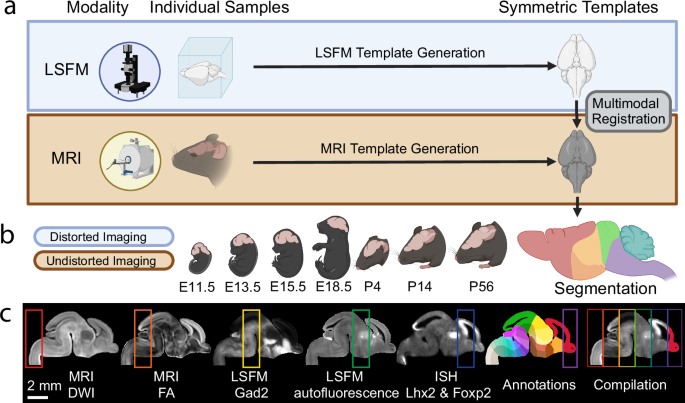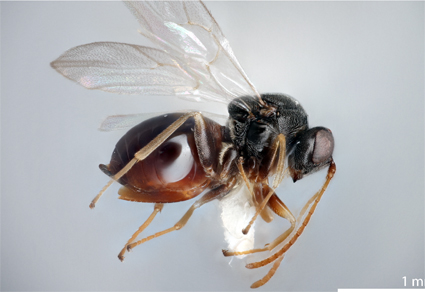2024-10-21 ペンシルベニア州立大学(PennState)
<関連情報>
- https://www.psu.edu/news/research/story/researchers-develop-3d-atlas-developing-mammalian-brain
- https://www.nature.com/articles/s41467-024-53254-w
発達段階にあるマウスの脳に共通する座標フレームワーク Developmental mouse brain common coordinate framework
Fae N. Kronman,Josephine K. Liwang,Rebecca Betty,Daniel J. Vanselow,Yuan-Ting Wu,Nicholas J. Tustison,Ashwin Bhandiwad,Steffy B. Manjila,Jennifer A. Minteer,Donghui Shin,Choong Heon Lee,Rohan Patil,Jeffrey T. Duda,Jian Xue,Yingxi Lin,Keith C. Cheng,Luis Puelles,James C. Gee,Jiangyang Zhang,Lydia Ng & Yongsoo Kim
Nature Communications Published:21 October 2024
DOI:https://doi.org/10.1038/s41467-024-53254-w

Abstract
3D brain atlases are key resources to understand the brain’s spatial organization and promote interoperability across different studies. However, unlike the adult mouse brain, the lack of developing mouse brain 3D reference atlases hinders advancements in understanding brain development. Here, we present a 3D developmental common coordinate framework (DevCCF) spanning embryonic day (E)11.5, E13.5, E15.5, E18.5, and postnatal day (P)4, P14, and P56, featuring undistorted morphologically averaged atlas templates created from magnetic resonance imaging and co-registered high-resolution light sheet fluorescence microscopy templates. The DevCCF with 3D anatomical segmentations can be downloaded or explored via an interactive 3D web-visualizer. As a use case, we utilize the DevCCF to unveil GABAergic neuron emergence in embryonic brains. Moreover, we map the Allen CCFv3 and spatial transcriptome cell-type data to our stereotaxic P56 atlas. In summary, the DevCCF is an openly accessible resource for multi-study data integration to advance our understanding of brain development.


